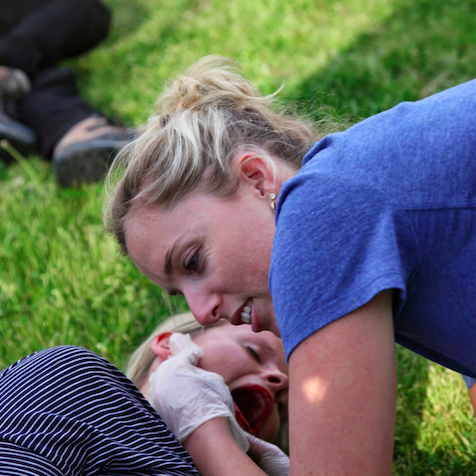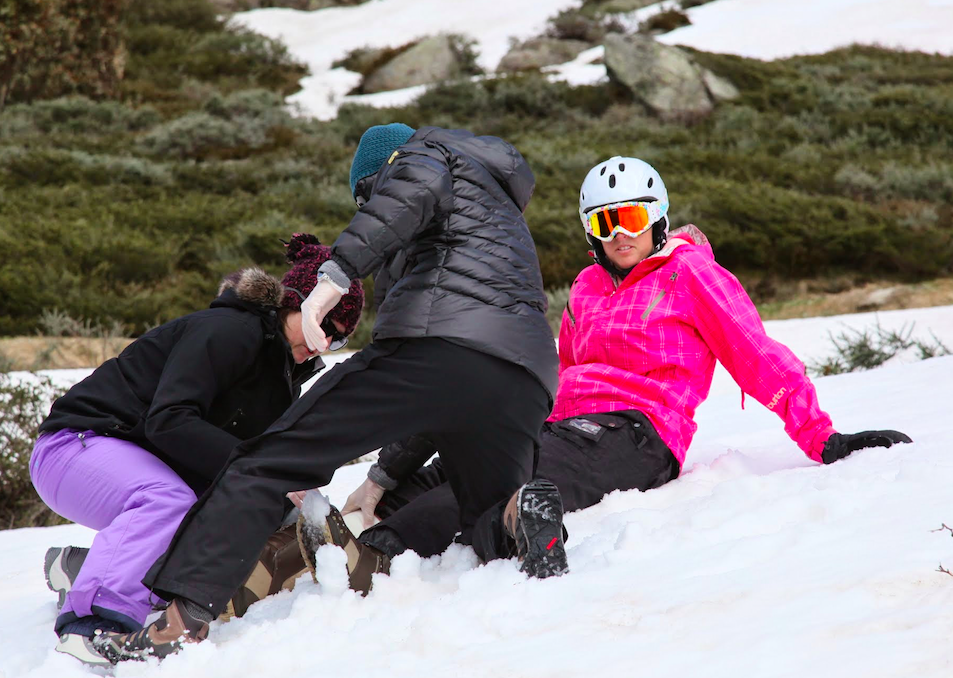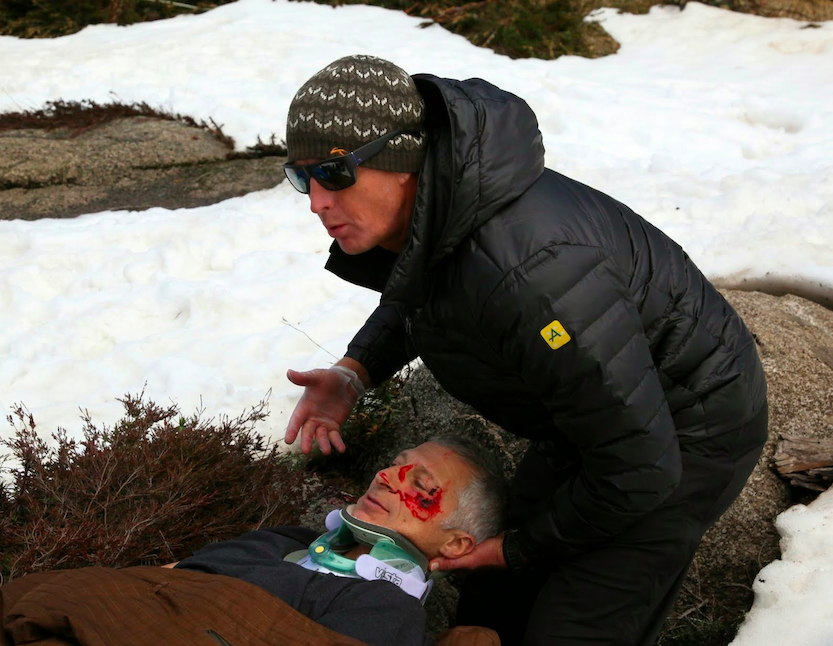Travelling with the Australian Ski Team as team Physiotherapist
Next week I'll be travelling to Aspen, Colorado as the travelling Physiotherapist with the Australian and New Zealand Para Alpine teams. I thought it was a perfect opportunity to shed some light on the role of a travelling Physiotherapist with Australian athletes. To do this, Physiotherapist Peter Hogg has offered his insight and shared his experiences with me.
Peter has been servicing the Olympic Winter Institute for 20 years, including coverage to freestyle moguls, aerials, half-pipe snowboard, ski-X and alpine. Peter attended the 2002, 2006, 2010 and 2014 Olympic Games, has covered over 10 world championships and 100 world cup events. Peter runs a Physiotherapy practice in Noosa, Australia. With so much experience in this field of Physiotherapy, Peter is happy to share some tips on how Physiotherapists can best prepare for the transition into this new work environment.
Q: Before leaving home, how do you prepare for your assignment?
There are a number of items I like to attend to, to ensure I fulfil my duties. These are my most valuable tips.
- Review your duties. The OWIA organisation constantly upgrades expectations and despite many years on tour, I do like to refresh so that I go into the assignment with clear intention.
- Liaise with the coach. In my opinion, the coach 'runs the show' and so it is good to contact the coach to ensure all logistics are in sync with team plans and also discuss any variables inclusive of current injuries, goals for the period with the team, and whether any products need to be brought from Australia.
- Review physio notes. Australian physiotherapists now record clinical notes on a new data system called AMS which most teams involved with the AIS utilise. It is possible to forecast the issues you will be dealing with before you arrive, which is fundamental.
- Know where the medical services are in the area that you are travelling to. Often attending the 'team leaders and medical meeting' at the induction for the venue is valuable.
- Be healthy. Physiotherapists that travel on assignments with a team often leave a busy practice and have busy lives at home. I strongly recommend ensuring you are well rested before team travel so you are capable of having the resilience to endure travel and work long stressful hours over many weeks with the athletes.
Q: What are your daily duties once you join the team?
The role of the Physiotherapist is to provide industry leading best practice physiotherapy service. Team physiotherapists have multiple roles and it does depend somewhat on 'the entourage' that you have with you. In most situations the team is small and is made up of coaching staff, athletes and yourself. In these situations, the physiotherapist is not only responsible for treating and managing injuries but may extend the duties to supervising physiological warmups and recovery sessions, on hill video, assisting in gym sessions, assistance with transport and simple team management issues such as hotel/airport check ins. They also play a large role in attending training and competition as a first aid responder. At major events the number of speciality support staff including psychology, strength and conditioning and ski techs usually increases and the role of physiotherapist becomes more specific to injury management and surveillance.
Q : What changes have you seen over twenty years specifically to physiotherapy with the team?
The are a number of obvious advancements :
- Being more accountable for your decisions and actions based on 'best practice'.
- The requirement for training inclusive of compulsory post graduate sports physiotherapy qualifications, knowledge of concussion testing management and regular attendance to first aid courses so as to improve first responder care.
- A larger physiotherapy service team steered by dedicated OWI medical officer and executive which has created transparent procedures and systems.
As you can see from the images above (taken at the 2014 OWIA annual skills update) a lot of time and effort is placed in practising first aid responder and CPR skills in a realistic environment. Real-life scenarios are staged with the use of make-up and props, to prepare the Physiotherapists for the possible scenarios they may become involved in. All of what you see in these pictures is make-up. Pretty cool... but when you're in the role, it can seem so realistic you almost forget that you're just practising.
Q : Can you specify some of the personal qualities that you think are important?
Every physiotherapist will have their own style however at the end of the day, the essentials of trust, dedication, being organised, punctuality, thoroughness and being a good communicator remain paramount. If the team is vibrant, enthusiastic and performing well, I know that how I have integrated within the team is likely to be positive which is so, so important.
Q : Can you be more specific with some of the organisational aspects that help you?
There are a number of specifics that need to be addressed:
- Ensure the medical kit is well stocked at the commencement of your assignment.
- Estimate and appreciate excess baggage costs and decide whether your take a massage table with you or can make alternative plans at the venues you visit - liaise with other physiotherapists that are familiar with where you are travelling to for advice regarding this.
- Stay on top of clinical notes and report any major injury or incident to the association's managing physiotherapist.
Q : What have you gained personally by being involved over the years?
National sports team involvement pushes you to treat athletes as best as possible, which drives ongoing improvement. With this effort comes self satisfaction and pride for being involved. Athletes, coaches and executive staff also often become very good friends.
Associated with ski team involvement is travel to amazing locations which would not usually be experienced. Exposure to the myriad of physiotherapy techniques and progressive return to sport injury programs is very stimulating. These opportunities provide personal growth which also help with other aspects of your life inclusive of business at home.
Q : Can you comment on differentiation technical tests for 'skiers thumb' and management?
My standing is that it is important to decide on whether the strain to the ulnar collateral ligament (UCL) is incomplete or complete as this will determine management. Manual stress testing into MCP abduction can usually determine this - an end point without significant laxity is usually a good indicator that conservative management will suffice until radiology can be sought to confirm. The mechanism of forced abduction versus forced hyperextension can help to predict the likelihood of UCL involvement versus volar plate involvement respectively, but essentially they will be distinguished with radiology. In the presence of partial strain, thumb spicas made from thermoplastics and/or protective taping is required for 6 weeks. In the presence of complete UCL tear and major avulsion, whether it be UCL insertion or volar plate involvement, surgery is required.
It's been great to chat with Peter and gain a better perspective of the diverse role a Physiotherapist plays in this environment. I think many of these principles can be transferred to other sports and provide guidance to Physiotherapists transitioning between private practice or hospital-type environments into the sporting environment.
Looking forward to my upcoming trip in Aspen and the experiences that it holds. Sian









